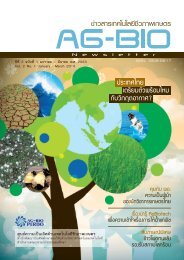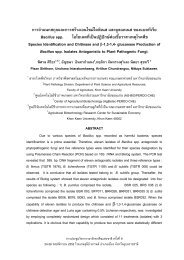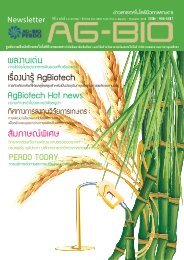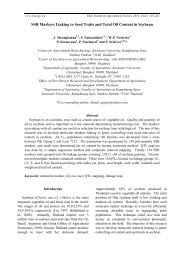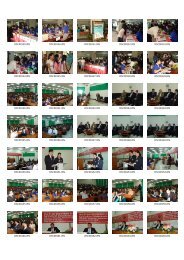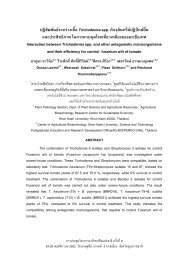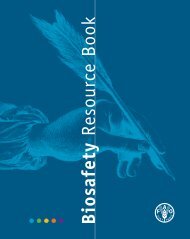Biosafety Manual PDF - Lawrence Berkeley National Laboratory
Biosafety Manual PDF - Lawrence Berkeley National Laboratory
Biosafety Manual PDF - Lawrence Berkeley National Laboratory
You also want an ePaper? Increase the reach of your titles
YUMPU automatically turns print PDFs into web optimized ePapers that Google loves.
<strong>Biosafety</strong> <strong>Manual</strong><br />
IBC-approved version (May 18, 2010)<br />
or appropriate for the work, respirators may be needed to provide respiratory protection (e.g.,<br />
potential exposure to airborne transmissible disease agents during patient care).<br />
Respirators or face masks are occasionally worn by workers while conducting work with<br />
biological materials. There are important differences in design, purpose, and requirements<br />
between types of respirators and face masks that may be used for biological materials:<br />
• A respirator is a device designed and certified to protect the wearer from the inhalation<br />
of harmful atmospheres. A respirator may be a required respiratory control or worn<br />
voluntarily by the worker. A respirator might also provide face or product protection.<br />
Types and examples of some respirators:<br />
o A negative-pressure, air-purifying respirator is a tight-fitting respirator in which<br />
the air pressure inside the facepiece is negative during inhalation with respect to the<br />
ambient air pressure outside the respirator, and an air-purifying filter or cartridge<br />
removes specific air contaminants. Examples include the following types of cartridge<br />
and filtering facepiece respirators:<br />
‣ A negative-pressure, air-purifying, cartridge respirator is a respirator that<br />
uses a filter, sorbent, or catalyst housed inside a cartridge to remove<br />
contaminants from the air. Examples are respirators using an N95 or P100<br />
cartridge particulate filter that is 95% and 100% efficient, respectively.<br />
‣ A filtering facepiece respirator is a negative pressure, air-purifying respirator<br />
with a particulate filter as an integral part of the facepiece or with the entire<br />
facepiece composed of the filtering medium. A filtering facepiece respirator is<br />
sometimes incorrectly referred to as a dust mask or an N95 respirator. The<br />
term “dust mask” is an inaccurate term because a filtering facepiece respirator is<br />
a respirator, not a face mask. In addition, filtering facepiece respirators are not to<br />
be confused with N95 respirators, because only cartridge-type respirators use<br />
N95 filters.<br />
o A positive-pressure respirator is a respirator designed to maintain positive<br />
pressure inside the facepiece during exhalation and inhalation. Examples include a<br />
powered air-purifying respirator or a supplied-air respirator, which are not normally<br />
used at LBNL for biosafety purposes.<br />
• A face mask is a loose-fitting, disposable device that covers the worker’s nose and<br />
mouth and is not a respirator. Examples of face masks include products labeled as<br />
surgical, medical, dental, or isolation masks. A face mask might be worn in combination<br />
with eye protection to protect the nose and mouth from splatters or sprays, or the face<br />
mask might prevent the wearer from contaminating a product, patient, lab animal, or<br />
surface from particles (e.g., droplets) expelled from the nose or mouth. Face masks are<br />
not intended to protect the wearer from inhalation of airborne agents and must not be<br />
used for respiratory protection.<br />
Filtering facepiece respirator.<br />
Face mask<br />
Source: CDC courtesy of Moldex Metric Inc. (April 2009). Source: CDC (April 2009)<br />
Printed copies are not official versions of this manual. Before using the printed copy, verify that it is the most current version.<br />
48



